One of my smart relatives of the younger generation (and this one I'm thinking of has a PhD to support my possible family impartiality) got an invitation in the spring of 2017 to go as an expert in her field to work at the University in Torun, Poland, for a couple of months.
I must admit that I don’t remember having heard of Torun before Aleksandra got this invitation. Still, as soon as I found out about this, it occurred to me that this could be a nice reason for me to go and visit both Poland and Aleksandra. I searched a little to see where Torun was and what it was all about, got very excited about the prospect and there I reached more or less the decision as to how and where to spend my summer holidays.
Torun is some 200 km far from Warsaw and it is in the UNESCO’s World Heritage List. The list also includes Warsaw and Malbork castle near Gdansk. This practically decided on the question where and I gave myself two weeks for the purpose. I bought the ticket in June, but I had so much work and obligations at the time that I couldn’t find any time to deal with the details of the trip. I only had the idea of going to Warsaw for a few days, then to Torun and then spend the rest of the time in Gdansk. Although I had not visited this part of Poland before, I did wonder what I would be doing in three places for two weeks. Well, OK, I said to myself. You are going to rest, sit around cafés and look in the distance. Still, I did worry I may get bored.
And then through some work I came across a colleague who is a translator for Polish, so I asked her for any recommendations. She mentioned lakes in the Masurian region and then I finally started thinking about geography and realized that Kaliningrad, Russia, was nearby and I was beside myself with delight. First I liked the idea going to Kaliningrad, since this had been my desire from years ago because of Kant, because of the specificity of this Russian enclave and because I had never been to Russia, so why not start with my visits to Russia from here. The other reason was that in this way I would be killing two birds with the same stone, if I can put it that way – I would be going to new parts of a country I had visited many years ago, plus I would have a chance to visit a completely new country.
All of a sudden two weeks no longer seemed very much and I realized I had to work well on the details of my trip. As soon as I got some free time, I started with this, so I booked almost all of my accommodations, bought almost all of the tickets for moving from one place to another, etc. I also left for the very end a visit to the Bialowieza National Park in the east of the country, at the very border with Belorussia, which is also in the UNESCO’s list (as natural heritage). The reason for this is that this is the last large rainforest in Europe and it provides a proper insight into what vegetation used to be like in this part of the continent. This is also the only place where the European bison may be spotted in its natural habitat.
Since not everything seemed quite clear though and I didn’t want to go into too many details about this final part of the trip and I left the last 3 to 4 days open, but with a very clear idea as to what I would like to do each day. The plan was to work out the details along the way.
Still, I did have to face a few “challenges” (a popular word nowadays) when I got to the part concerning the organization of transportation from Gdansk to Kaliningrad. I had already set the dates that suited me and even booked the accommodation, but when I started working on the transportation I kept coming across some problems. First, I couldn’t find any train or any information about it. Then I started looking at coach transportation and got a bit scared when I found a company covering this route twice a week on the days that did not suit me at all! I kept researching and then I stumbled across the site of a Russian coach operator and the site was in Russian, which is logical, but without a page in English. This is where my knowledge of the Cyrillic script comes onto the scene, as well as certain similarity between Russian and Serbian, and when I simply did not understand something I used the Google translate, i.e., the internet translation service. By the way, as a translator, I must emphasize that this translation service is rather ridiculous and absolutely unusable for any serious purposes, but for situations such as mine, translation of individual words and shorter expressions, it may do.
So, I filled out the necessary forms and even selected the seat, which made me feel very content. I also booked my return to Poland and there I more or less stopped with my advance organization of my vacation. I was ready!
Approximate route of my travel around Poland and Russia
My first impressions after arriving in Poland, that is, from the bus on the way from the airport to the centre, were that everything was green. After Belgrade, which is scorched in July, the fresh green grass I encountered in Warsaw seemed as if I had just entered a spring! The temperature was in line with that and seemed wonderfully pleasant. I think that for people from south Europe these latitudes are ideal for visiting during summer. In addition to being able to see beautiful places and landscapes, this may also constitute a brief respite from the heat everybody has been complaining about in the recent years. On the other hand, it may rain quite a lot in Poland in summer, thus making humidity very high. As good as this may be for complexion, it is actually rather bad if one is not used to so much humidity and if one does not like perspiring and having a sensation as if one’s skin were sticky.
As for my accommodation, I had rented a flat in the very centre of the city and so just 5 minutes after leaving my things in the flat I was already in the pedestrian street. The first impressions were those of awe and getting breathless with beauty. Before arriving here, I had thought that the central European architecture was a bit boring for me. My God, I do get all sorts of silly ideas sometimes!!! The old town in Warsaw is a stunning place. I immediately went to the nearby square, Plac Zamkowy, where there is the Royal Castle. There were a lot of people, it was a Saturday evening, a lot of cafés and restaurants, street musicians and entertainers. I thoroughly enjoyed my stroll around the old town and was very satisfied with my choice of the destination for my “summer vacation.”
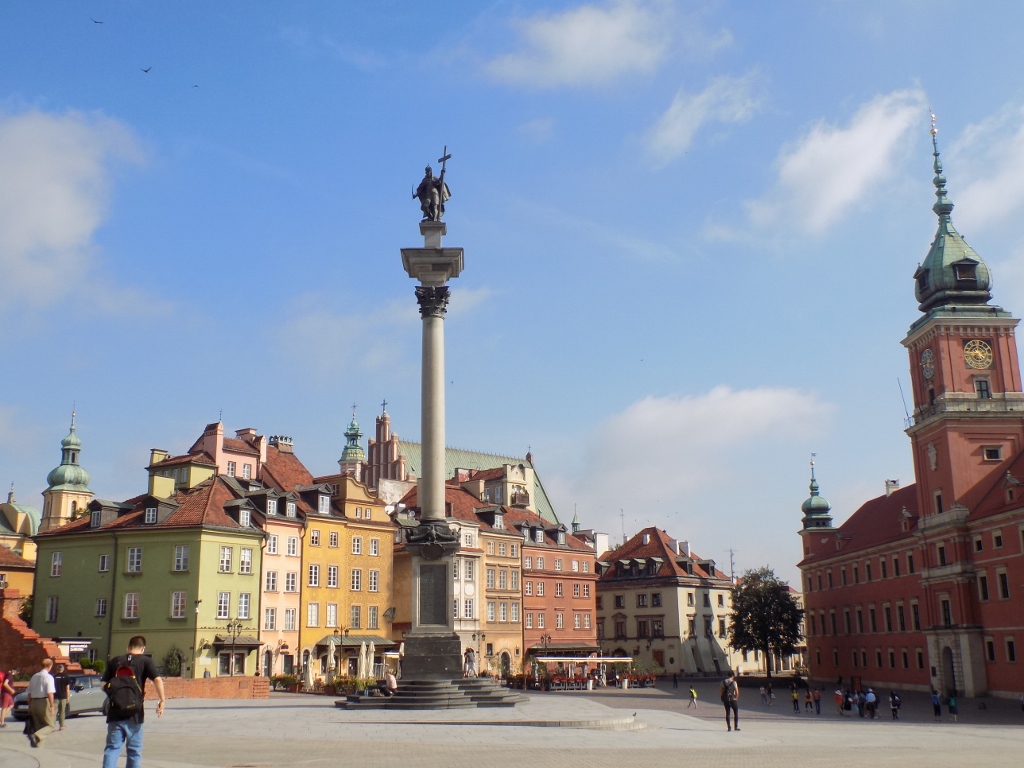 Plac Zamkowy in Warsaw during the day
Plac Zamkowy in Warsaw during the day
The next morning I started visiting churches and viewing palaces along the Royal Route. It was Sunday around 9 o’clock in the morning and there were not many people in the street. On the other hand, it was cloudy and there had even been some rain with the forecast saying there would be more.
The Royal Route is the name for a route leading from the Old Town and the Royal Castle to the south of the city and the Wilanow Palace.
I first passed by the Church of the Assumption of the Virgin Mary and of St. Joseph, better known as the Carmelite Church. There was an ongoing service, so I did not stay in for too long. In terms of its architectural style, the church is important because it has the oldest classicistic facade in Poland.
The historical palaces that may be seen along the Royal Route are nowadays mostly used for something specific. For instance, the Ministry of Culture or the Presidential Palace. In the period I was there, there had been a lot of demonstrations against some moves taken by the Polish president, so there were metal fences placed in front of the access to the palace, but there were also burning candles obviously left there the night before by the demonstrators.
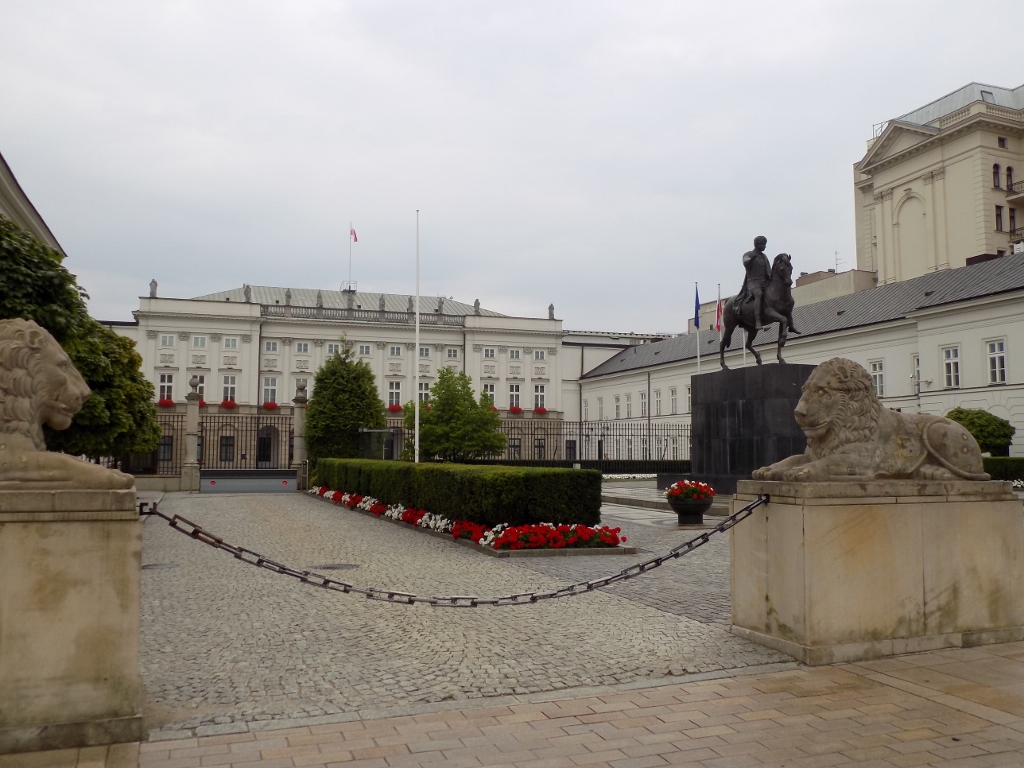 Presidential Palace in Warsaw
Presidential Palace in Warsaw
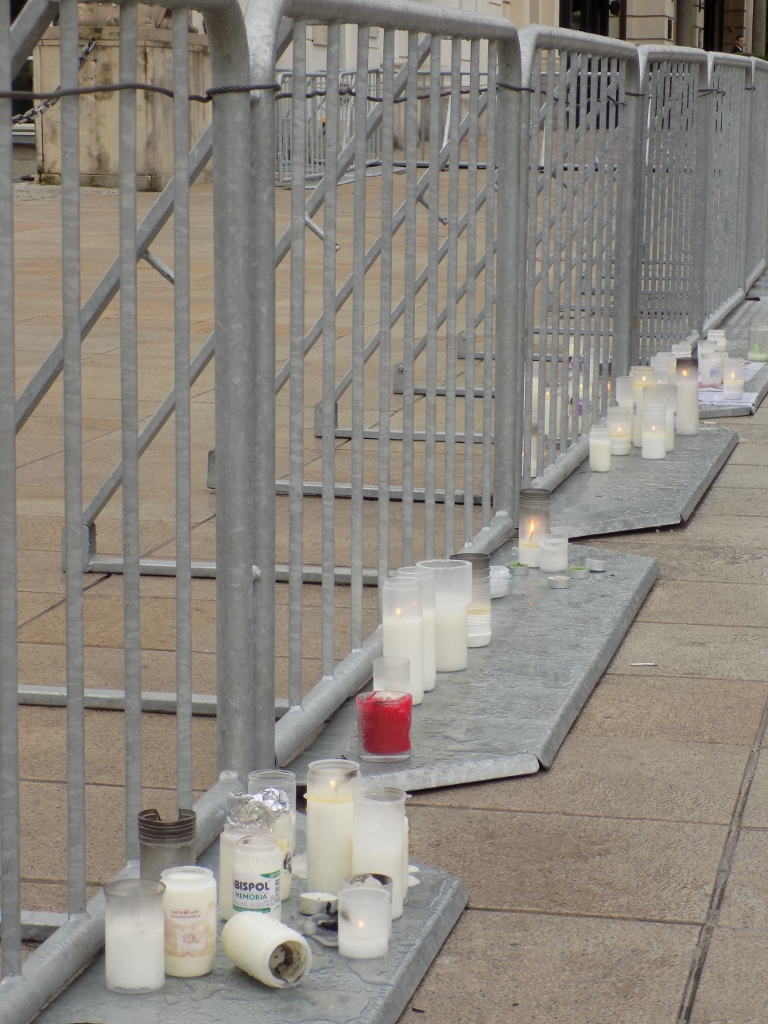 Candles in front of the Presidential Palace
Candles in front of the Presidential Palace
Very near there is the University of Warsaw and even the seat of the university is housed in one of the famous palaces belonging to the Royal Route – the Kazimierz Palace. While searching for this palace, I passed by the main library and different faculties, and all of this area is truly impressive. Then I went to the Polish Academy of Sciences in front of which there is a monument to Nicolaus Copernicus, with a stylized heliocentric system depicted on the pavement, i.e., the Sun in the middle with the planets revolving around it – Mercury, Venus, Earth (with the Moon), Mars, Jupiter and Saturn.
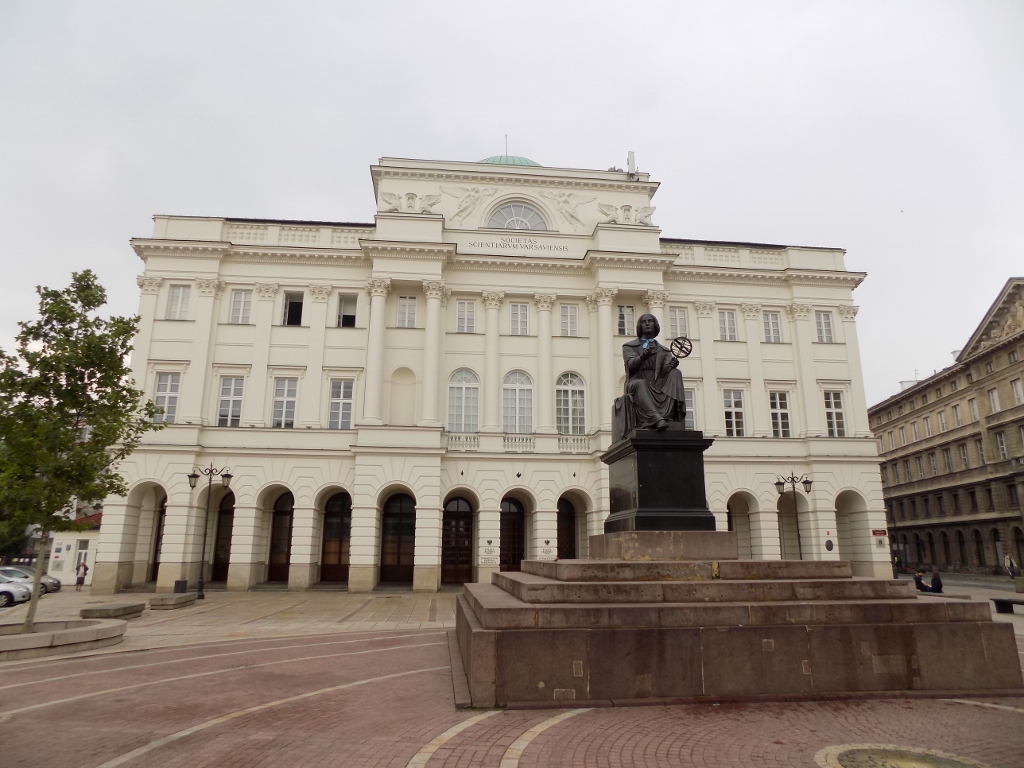 Polish Academy of Arts and the monument to Nicolaus Copernicus (you can see the circles on the pavement representing the revolving routes of the planets)
Polish Academy of Arts and the monument to Nicolaus Copernicus (you can see the circles on the pavement representing the revolving routes of the planets)
And then the rain started again, so I took advantage of the situation and entered the Holy Cross Church in which there was also a service going on, but there I could not help myself and stayed in for a little while, for it is in this church that the heart of Fryderyk Chopin was laid to rest. At his will. His body was buried in Paris, at the Pere-Lachaise cemetery.
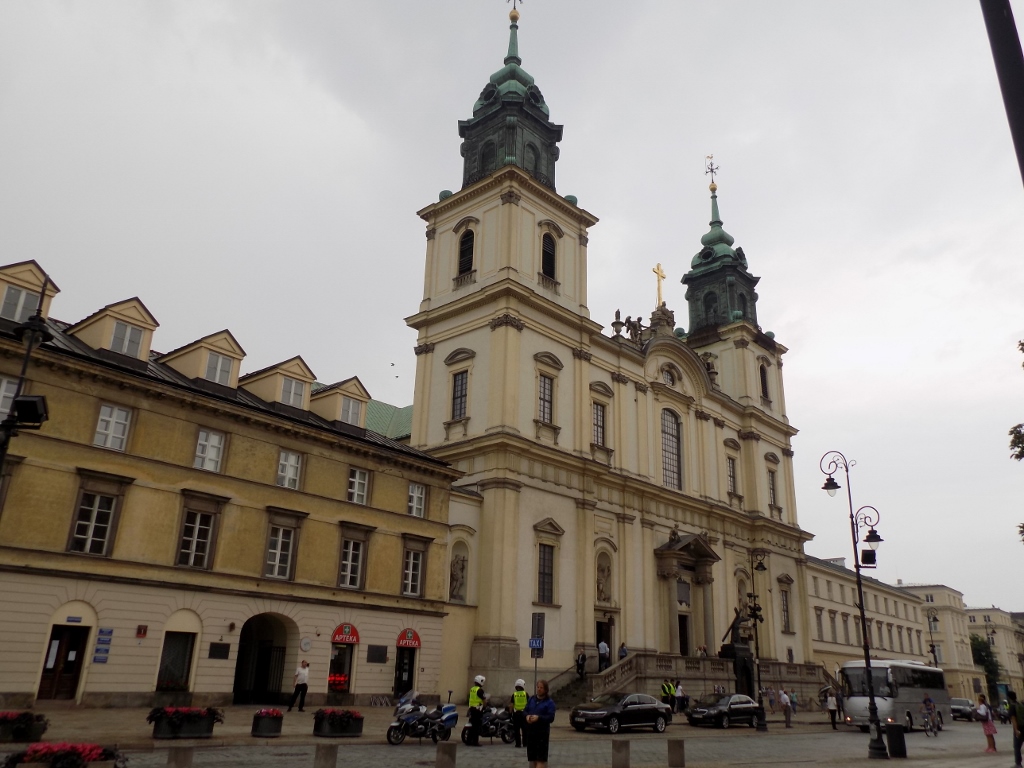 Holy Cross Church
Holy Cross Church
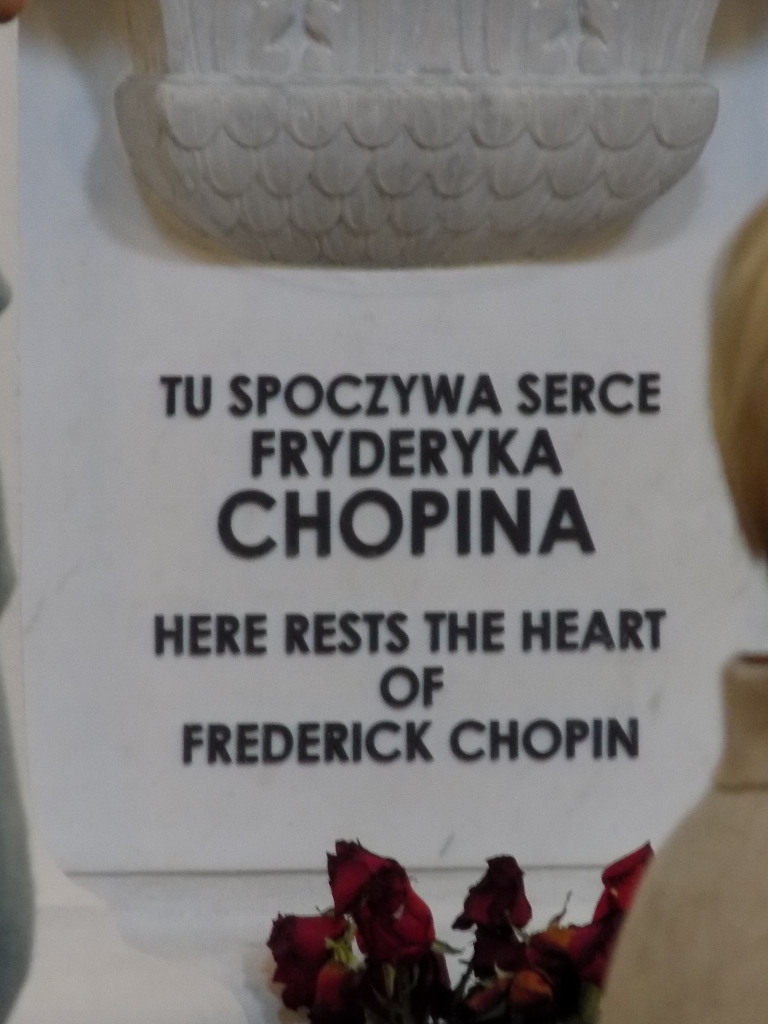 Place where the heart of Fryderyk Chopin was laid to rest
Place where the heart of Fryderyk Chopin was laid to rest
When I left the church, it was still raining, although not too much, but I decided anyway to go back to the relatively close flat in order not to get wet for nothing and anyway I had planned to wait with my sightseeing until 11 o’clock when the Royal Castles was opening for visits. Still, before visiting the castle, I climbed a nearby terrace-viewpoint, Taras Widikowy, from where I enjoyed in the nice view of the Old Town, as well as that of the pedestrian street.
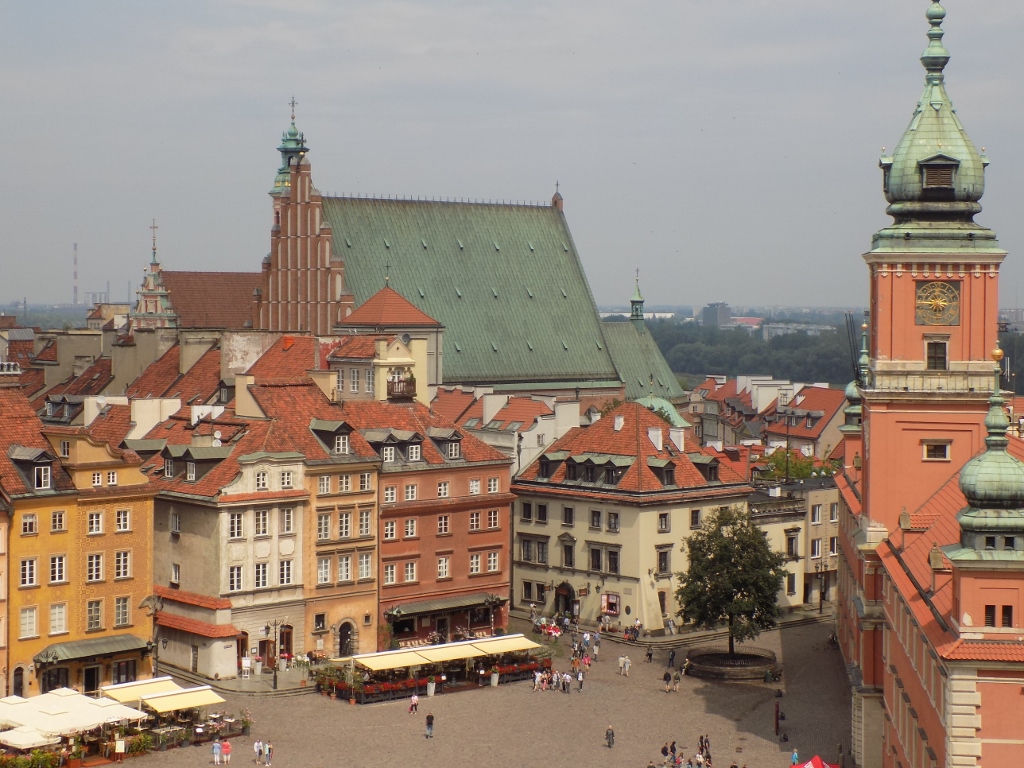 Plac Zamkowy, with the Royal Castle to the right
Plac Zamkowy, with the Royal Castle to the right
In the meantime, the clouds had scattered, the sky was blue, the sun was shining and when I got to the Royal Castle it turned out that for some reasons the entry was free of charge that day. On the other hand, the line for entering the castle was huge and I had to wait for almost 40 minutes before getting in.
The history of the almost seven century old Royal Castle is more or less standard until 1939 when the Second World War started and when the Germans attacked and occupied Poland. On 17 September 1939, the German artillery hit the castle and its clocks stopped at 11:15 am. The conscientious and dedicated employees of the Royal Castle, which served as the Presidential Palace between the two world wars, managed to hide and protect some of the exhibits, but in 1944, when withdrawing, the Germans literally blew the whole castle into pieces as a kind of revenge for the uprising of the Poles. The photographs of the demolished castle are truly distressing. There was only one, truncated, barren and wobbly wall left. Everything else was flattened to the ground. A good share of the palaces along the Royal Route were reconstructed in the first years after WWII, but the Royal Castle had to wait until the 1970’s when the decision on its reconstruction was finally made. Then the people working on the project asked the Poles, both in the country and abroad, to give their donations, after which the members of this nation with a high degree of awareness stepped up, collected the funds and in 1984 the Royal Castle was ready to receive its first visitors. In comparison to some other palaces and castles around the world, this is a relatively small space, but it is certainly very important, not only because Poland has historically been a vital state in Europe, but especially because of this story, perseverance of memory, commitment of descendents and the desire of the entire nation to celebrate and preserve their history.
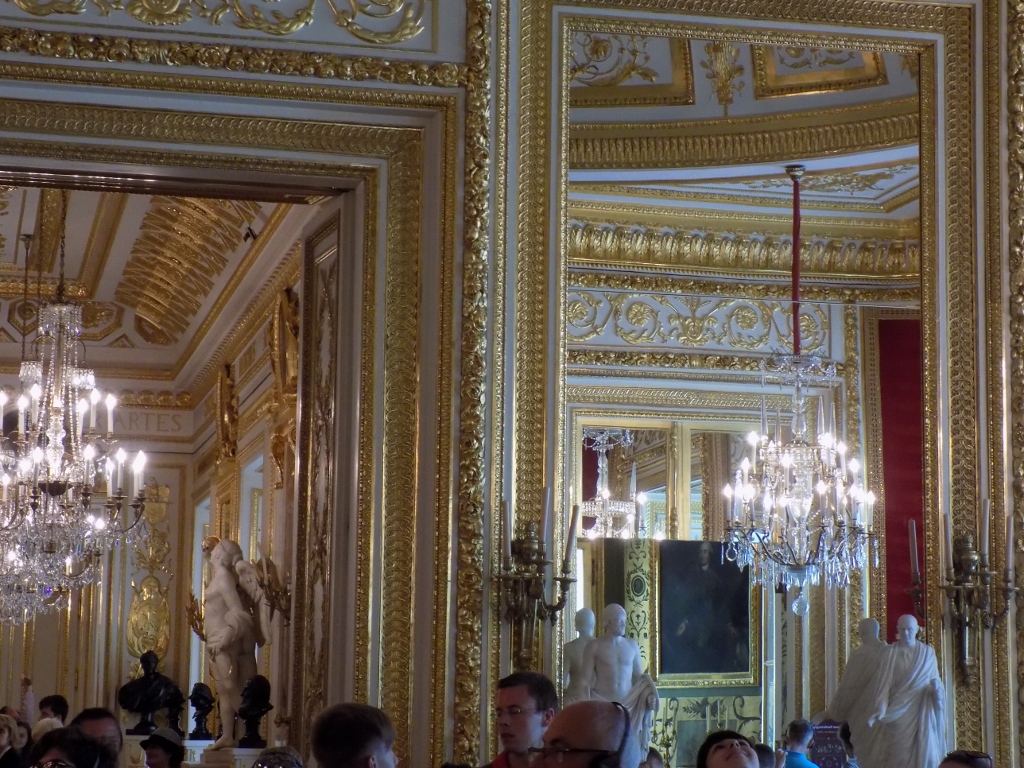 A detail from the Royal Castle in Warsaw
A detail from the Royal Castle in Warsaw
After I had finished with my visit to the Royal Castle, I went for a nice, although not too long a walk around the old town. Among other places, I also went to the Old Town Market Place (Rynek Starego Miasta). This very nice square nowadays contains tables that belong to the surrounding restaurants. But, there are also interesting details such as the bronze statue of the Warsaw mermaid. Namely, there is a depiction of a little mermaid on the coat-of-arms of Warsaw and it has been one of the symbols of the city since the 14th century.
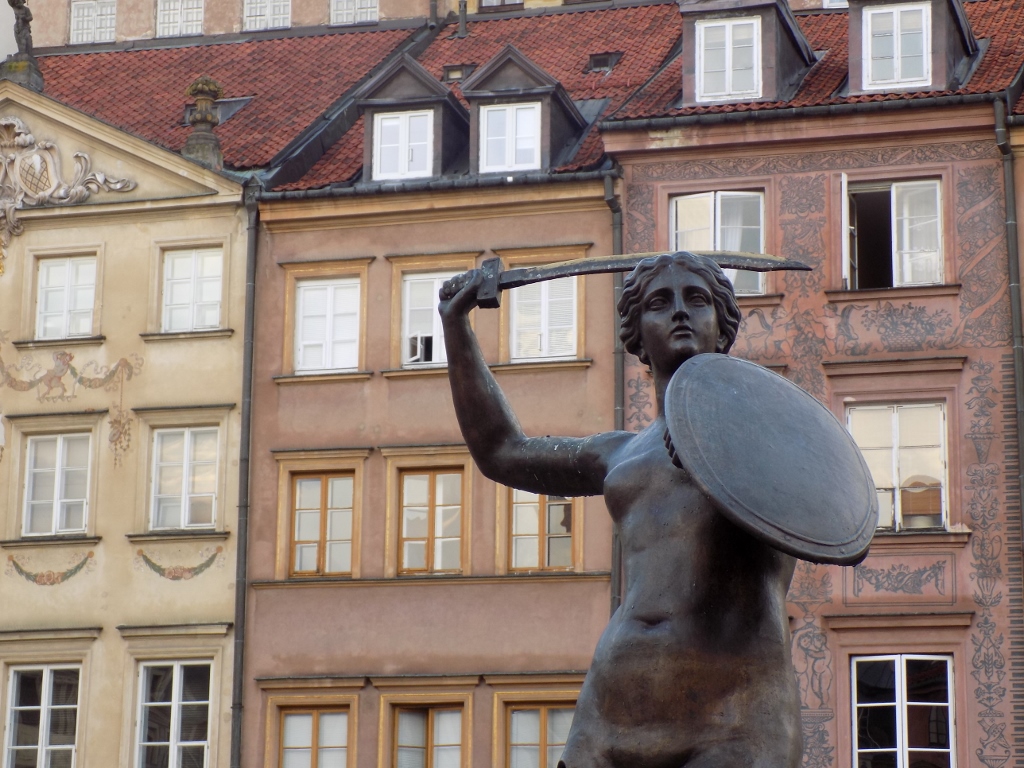 A detail from the Old Town Market Place – the Warsaw mermaid
A detail from the Old Town Market Place – the Warsaw mermaid
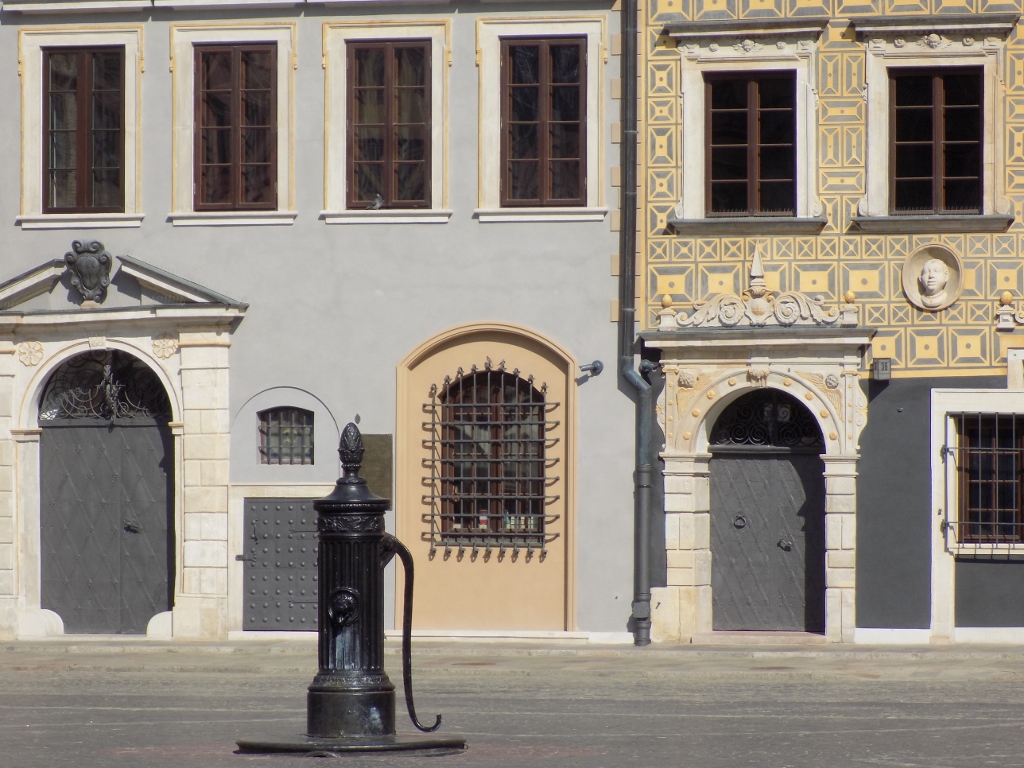 A detail from the Old Town Market Place
A detail from the Old Town Market Place
By this time I got a little hungry. I had a restaurant in the old town in mind, but it was just too crowded, so I eventually went to a smaller and less popular one, and among other things I ate Polish dumplings with potato and cheese. They were nice and tasty.
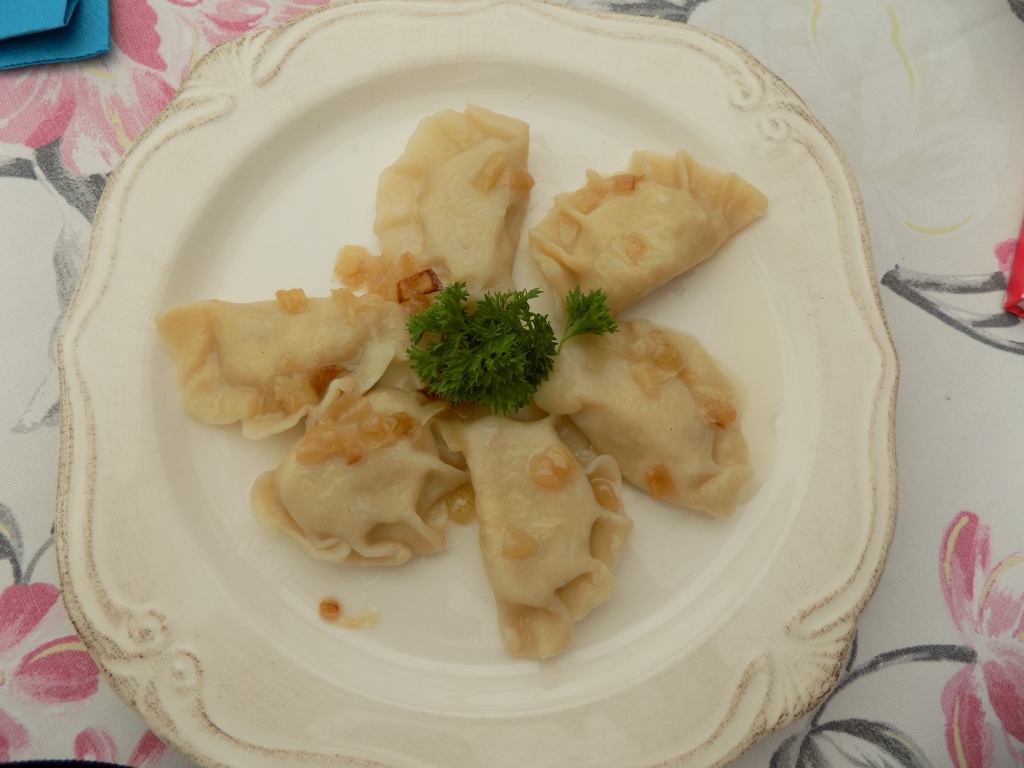 Polish dumplings
Polish dumplings
Since it was Sunday and summer, I had already made a plan in Belgrade to go to the Park Lazienki in order listen to the music of Chopin. Namely, from mid-May until the end of September, every Sunday, in the Park Lazienki, there are concerts of Chopin’s music organized in the open right next to the monument to this great composer. The monument was built in 1926, was destroyed in WWII, but was eventually reconstructed in 1958. Since the following year, i.e., since 1959, every summer there are concerts organized there – on Sunday, at noon and at 4 pm. I took city bus no. 116 in order to reach the park, got off at a stop that is right across the monument and even managed to find a rather good spot on the lawn although there had already been a lot of people around. The concert took almost one hour. Occasionally, it started to rain, some people even giving up, but I didn’t think it was too wet, so I stayed until the end and truly enjoyed it. Some of the melodies I didn’t know, but some other were very familiar. In addition to Chopin, the artist who gave the concert when I was there, also played a melody of a well known aria from Mozart’s Don Juan.
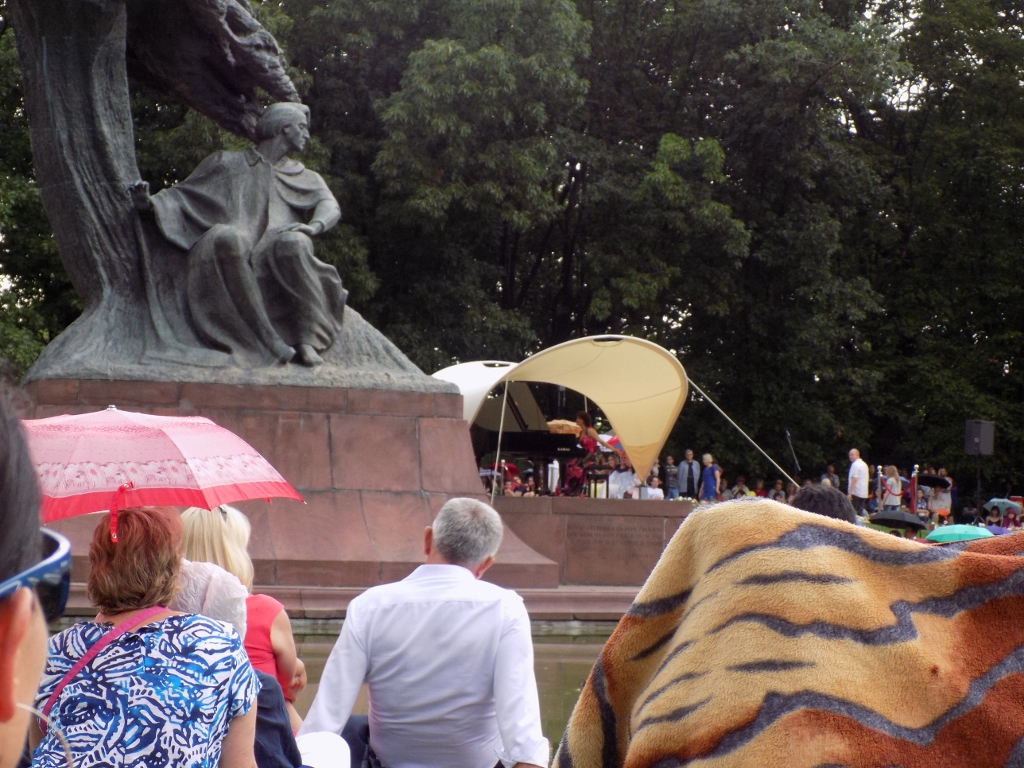 Chopin overlooking a follower at the piano
Chopin overlooking a follower at the piano
With the concert finished, I went to see Belvedere Palace. But, just as I was getting there, the sky suddenly opened and the rain started to pour. I’m sure this was the first cousin of the rain that had caused the mythical deluge. The umbrella and the rain jacket I had simply did not do. I was soaked through my underwear! Let alone my feet. So, I hid under some trees, like many others, and then I slowly headed for the centre of the city. I had originally planned to walk back, but I didn’t feel like walking in my drenched clothes. So, I got on a bus and soon found myself at the flat where I changed.
Then I went for a short walk around the old town and sat at a restaurant. Soon I got very tired, so I didn’t hang around for too long, since I had very ambitious plans for the following day, as well.